
This article was featured in our 2024 Summer edition of Montessori Life magazine. Read the full issue online (AMS members only).
AMS members also receive a print subscription to Montessori Life magazine. Become a member today to receive your own subscription plus access to the complete digital archives.
Editor’s note: This pictorial essay offers visuals and an itinerary of Maria Montessori’s visit to California in 1915. For more extensive information on this trip, we recommend “Reframing and Recontextualizing Maria Montessori’s 1915 California Visit” by Joel Parham (Journal of Montessori Research) and Maria Montessori Writes to Her Father: Letters from California, trans. Carolina Montessori (Montessori-Pierson).
Between April and December 1915, Maria Montessori and her son, Mario Montessori, spent time in California. Historical accounts of this period have emphasized Montessori’s participation in San Francisco’s world’s fair, the Panama-Pacific International Exposition (PPIE), and identified this event as the crux of her travels (Buckenmeyer, 2018; Cohen, 1972; Gutek & Gutek, 2020; C. Montessori, 2015). However, this is only part of the story. The following text and accompanying images provide an account of the Montessoris’ travels from Italy to California, where they visited Los Angeles, Oakland, Pasadena, San Diego, and San Francisco. This travelogue attempts to highlight some less-documented aspects of their travels to Southern California (i.e., San Diego and the Los Angeles area) in 1915, and show that some of the areas, buildings, and establishments they visited are still in existence today.
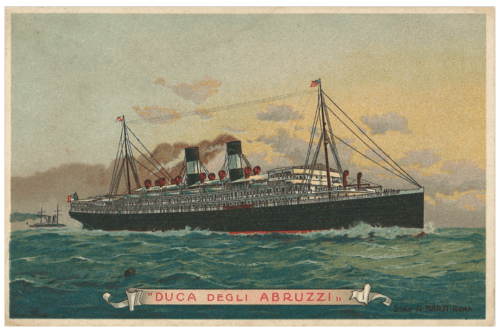
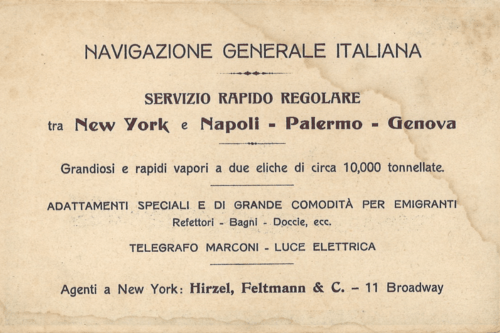
Duca degli Abruzzi Advertisement Card
This steamship, on which the Montessoris traveled from Italy to New York, was a 475-foot vessel that could accommodate over 1,800 passengers.
Source: Author’s personal collection
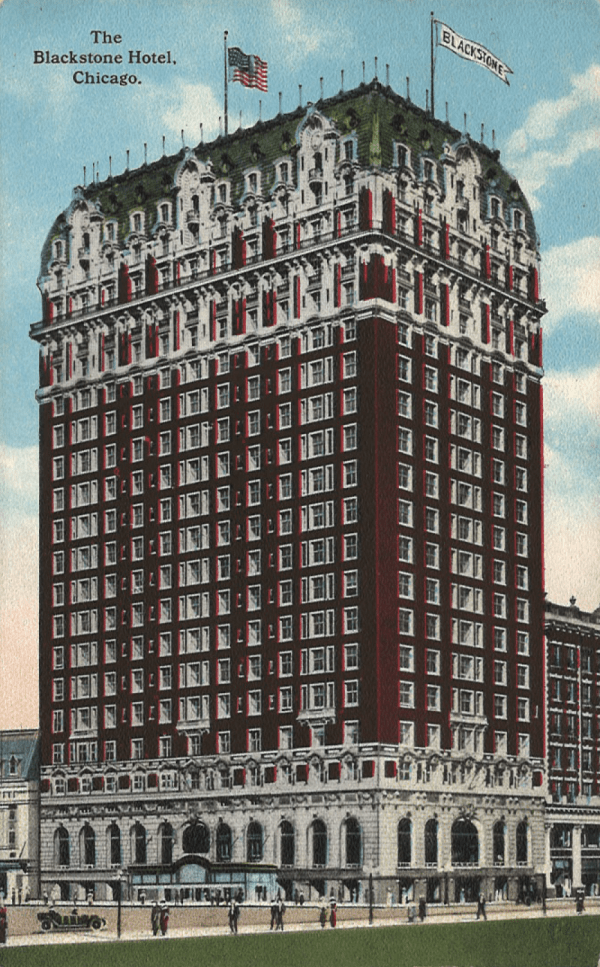
In April 1915, the Montessoris began their travels in Naples, Italy, where they boarded the steamship Duca degli Abruzzi (1), bound for New York. On April 20, a day after their arrival in New York, they visited a Montessori classroom in a tenement housing complex at 550 E. 77th Street. The next day, they toured PS45, in the Bronx, before boarding a Chicago-bound train. Upon their arrival in Chicago, they were guests of honor at a reception at the Blackstone Hotel (2), given by a group of Montessori’s former pupils. That evening, they departed aboard a westbound train, arriving in Oakland (at the Southern Pacific railroad terminus (3)) on April 25. From Oakland, the Montessoris boarded a ferry to cross the San Francisco Bay (4) and docked at San Francisco’s Ferry Building (5). From there, they traveled by automobile to the Inside Inn (6), a swanky hotel located inside the PPIE grounds. The following day, they attended a luncheon in Montessori’s honor at the California Building (7), sponsored by the Women’s Board of the Exposition.
2. Blackstone Hotel, Chicago
The Blackstone Hotel, at 636 S. Michigan Avenue, still stands today and is a Marriott property.
Source: Author’s personal collection
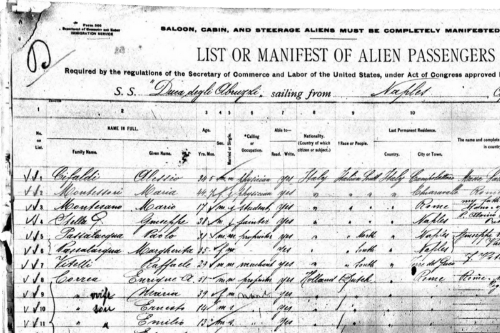
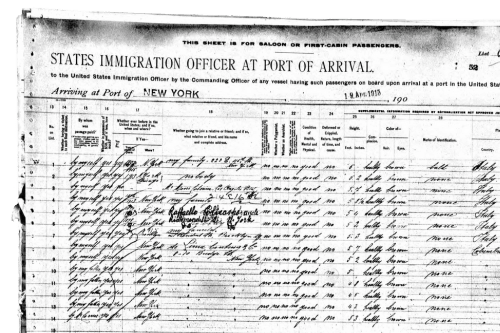
The Duca degli Abruzzi manifest
See the Montessoris on lines 2 and 3.
Source: Ancestry.com

3. Southern Pacific Railroad Terminus—Oakland
The “Oakland Mole,” or “Oakland Long Wharf,” was the western end of the line for the Southern Pacific train route—this structure no longer exists today.
Source: Author’s personal collection

4. Southern Pacific Ferry, Crossing the San Francisco Bay
Ferries traveled from what is today known as Jack London Square (Oakland) to the Ferry Building (San Francisco). Today, at the Maritime Museum of San Diego, visitors can view the Berkeley, a former Southern Pacific Railroad ferryboat and a fine example of the type of boat the Montessoris would have boarded to cross San Francisco Bay.
Source: Author’s personal collection
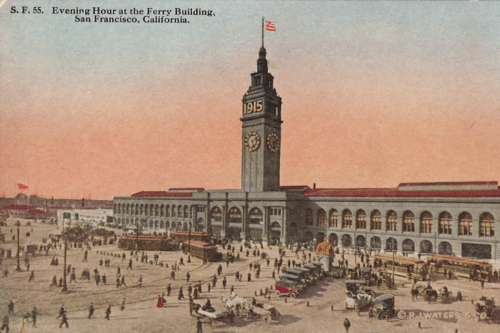
5. Ferry Building, San Francisco
The Ferry Building still operates as an active ferry terminal and houses shops, restaurants, and a bustling farmers’ market.
Source: Author’s personal collection
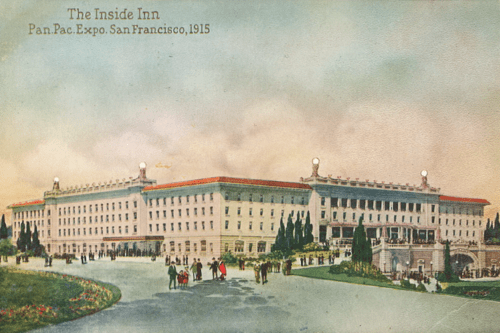
6. Inside Inn, PPIE, San Francisco
Room rates ranged from $2 to $15 a day (plus an extra 50 cents per day for admission to the Exposition), and each guest room boasted steam heat, both hot and cold water, and a telephone.
Source: Author’s personal collection

7. California Building, PPIE, San Francisco
This was built for the Exposition, and it abutted San Francisco Bay, in what is today’s Marina neighborhood. There were proposals to turn it into a school after the Exposition, but, like most of the other PPIE buildings, it was eventually torn down.
Source: Author’s personal collection
On April 28, the Montessoris left for Los Angeles by train and arrived later that day at the Southern Pacific station (8). From there, they traveled to the Hotel Maryland (9), in Pasadena, where they lodged for two days. Hotel Maryland was significant to Montessori because one of her former students had established a Montessori class on-site. A little over a week later, on May 8, the hotel was also the opening site for the first of two international training courses held in California in 1915. (Other lectures for this first course were conducted in Los Angeles, at the Boyle Heights Intermediate School (10).)
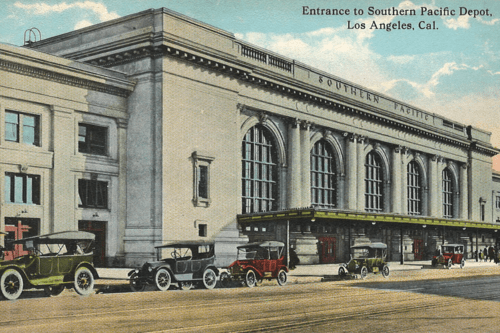
8. Southern Pacific Station, Los Angeles
This station, which stood on Central Avenue in what is today the Arts District in downtown Los Angeles, was decommissioned in 1956. The building has since been demolished, and the site is predominately occupied by warehouses and artist studios.
Source: Author’s personal collection
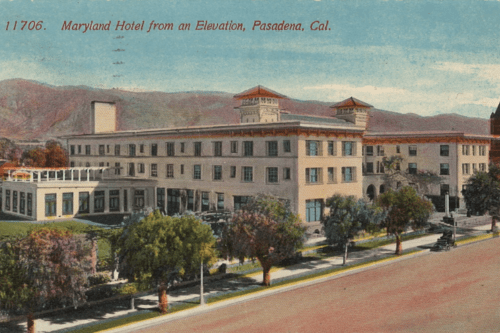
9. Hotel Maryland, Pasadena
Once located on East Colorado Boulevard between Euclid and Los Robles Avenues (in the heart of present-day downtown Pasadena), this building no longer exists.
Source: Author’s personal collection

10. Boyle Heights Intermediate School, Los Angeles
The site of this building is still the location of a public school, now called Hollenbeck Middle School.
Source: California Historical Society and University of Southern California Libraries.
While in Los Angeles, Montessori wrote her friend Anna Fedeli in Italy and encouraged her to travel to California to assist with the training course. Fedeli traveled from Naples, Italy, aboard the New York–bound ship Ancona (11). She then traversed the country by train, likely along the same route as the Montessoris. Around the time Fedeli arrived in Los Angeles, the Montessoris rented a bungalow near Westlake Park (12). Montessori’s personal letters describe her riding one of the rowboats around the lake, with Mario as the helmsman (C. Montessori, 2015).
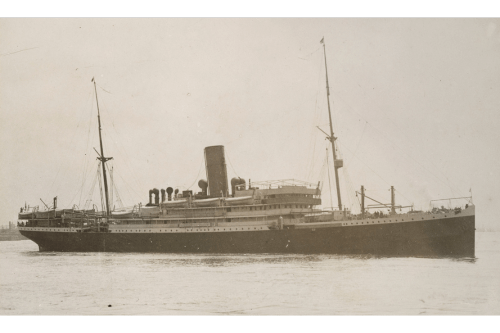
11. SS Ancona
Anna Fedeli traveled from Naples, Italy, aboard the New York–bound ship Ancona.
Source: National Archives and Records Administration (45499968)
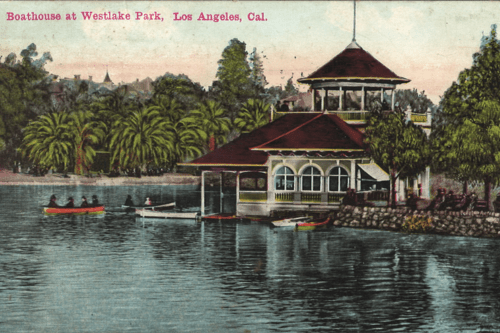
12. Westlake Park, Los Angeles
Today, Westlake Park is known as MacArthur Park. The boathouse no longer remains.
Source: Author’s personal collection
At the end of June, the Montessoris boarded the Santa Fe Railroad at Los Angeles’s La Grande Station (13), bound for San Diego’s Union Depot (14). The training course in San Diego—a continuation of the California training course that began in Pasadena—was conducted at the San Diego State Normal School (15), in connection with the Panama-California Exposition (PCE). In addition to the course, a demonstration classroom was established. On July 12—Education Day at the PCE—Philander P. Claxton (United States Commissioner of Education) and Maria Montessori both delivered speeches at San Diego’s Spreckels Pavilion (16) (C. Montessori, 2015).

13. La Grande Station (Santa Fe Railroad), Los Angeles
This train station, located at 2nd Street and Santa Fe Avenue, on the west bank of the Los Angeles River, was demolished in 1946.
Source: Author’s personal collection
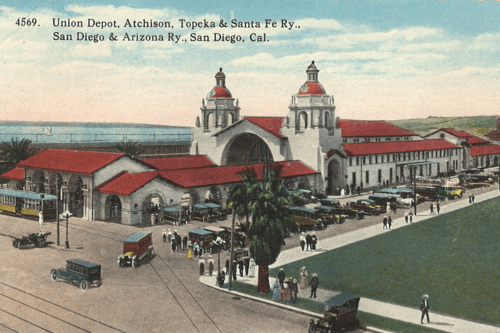
14. Santa Fe Depot (Santa Fe Railroad), San Diego
This excellent example of Mission/Spanish Revival–style architecture has been restored and still serves its original purpose as a train depot.
Source: Author’s personal collection
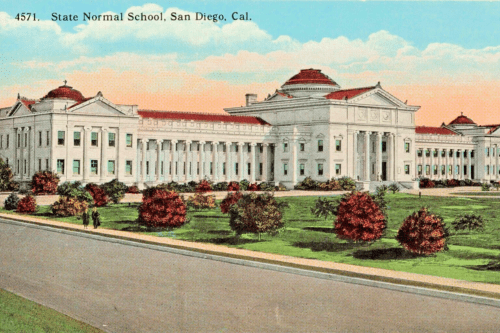
15. San Diego State Normal School
Today, this is the site of San Diego State University.
Source: Author’s personal collection
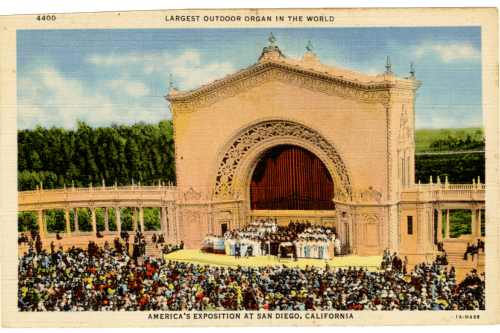
16. Spreckels Organ Pavilion
Spreckels Organ Pavilion, in San Diego’s Balboa Park, stands today and houses the world’s largest open-air pipe organ. This photograph of Maria Montessori and her translator, Adelia/
Mary Pyle (see p.33), first ran in the New York Times on August 1, 1915, with the slightly flawed caption “Mme. Montessori, famous for her new system of education for children, addressing 5,000 teachers at
Los Angeles.”
Source: Author’s personal collection
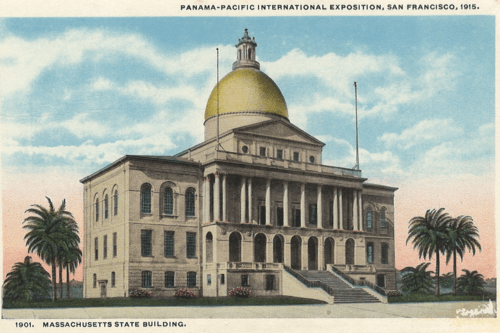
17. Massachusetts State Building, PPIE, San Francisco
On August 5, 1915,
Maria Montessori presented a lecture in the assembly hall of the Massachusetts State Building (Massachusetts Board of Panama-Pacific Managers, 1916). This building, along with most of the PPIE buildings,
has since been torn down.
Source: Author’s personal collection

18. Palace of Education, PPIE, San Francisco
From the Exposition guide: “The Eight Exhibit Palaces, Education, Liberal Arts, Manufactures, Varied Industries, Mines and Metallurgy, Transportation, Agriculture and Food Products, form the main group of the ‘walled city,’ with the Tower of Jewels in the center.”
Source: Author’s personal collection
From San Diego, the Montessoris and their contingent traveled to San Francisco, arriving on August 1, to participate in the PPIE. The next day, the second California Montessori training course began. Several days later, the demonstration classroom (19 and 20) in the Palace of Education opened (18). Often referred to as the “Glass House” or “Glass Classroom,” the demonstration classroom included theater-style seating to encourage visitors to observe the Montessori system in action (Bonsteel, 1995). Montessori conducted lectures in various state buildings (i.e., Massachusetts (17), Oregon, and Wisconsin), as well as in the Italian Pavilion (Lane County News, 1915; Massachusetts Board of Panama-Pacific Managers, 1916, p. 60; San Francisco Chronicle, 1915; San Francisco Examiner, 1915; Todd, 1921, vol. 4, p. 68). As with the one at the PCE, the course at the PPIE was delivered by Montessori, in Italian, aided by Fedeli, who served as her assistant, and Adelia/Mary Pyle, who served as her interpreter (L’Italia, 1915; San Diego Union, 1915; San Francisco Call and Post, 1915). In addition to the training course, Montessori also delivered a series of lectures for non-educators at San Francisco’s Palace Hotel.
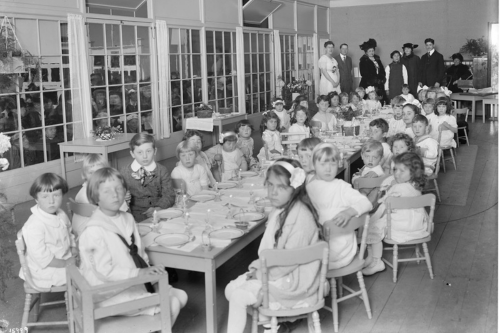
19. Demonstration Classroom, Casa dei Bambini, Palace of Education, PPIE, San Francisco
At back, from left to right: Helen Parkhurst, [unidentified man], Maria Montessori, [unidentified woman], Adelia/Mary Pyle, Mario Montessori, and [Anna Fedeli?]
Source: Edward A. Rogers Panama-Pacific International Exposition photograph collection, University of California, Berkeley, Bancroft Library (BANC PIC 2015.013:15989–NEG)
20. Demonstration Classroom, Casa dei Bambini, Palace of Education, PPIE, San Francisco
Source: Ryan, 1916
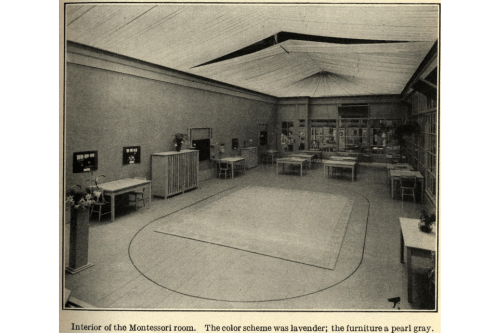

21. Oakland Municipal Auditorium (Civic Auditorium), Oakland
This auditorium is still standing and is now known as Kaiser Convention Center.
Source: Author’s personal collection
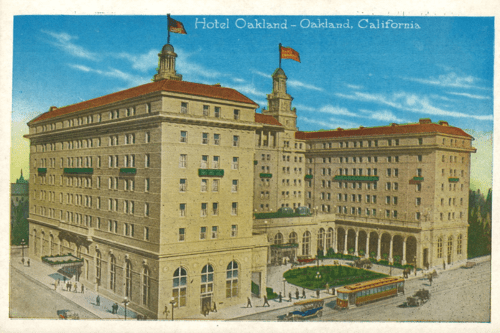
22. Hotel Oakland, Oakland
Hotel Oakland still exists today and serves as a retirement community called Hotel Oakland Village.
Source: Author’s personal collection
While in the Bay Area, Montessori also attended the National Education Association (NEA) annual meeting in Oakland, held at the Municipal Auditorium (21) and Hotel Oakland (22). In conjunction with the annual meeting, an International Congress on Education and a Montessori Congress were held. Montessori delivered four speeches at the NEA annual meeting and one speech at the Montessori Congress (Buckenmeyer, 2018, pp. 241–247; NEA, 1915a, 1915b).
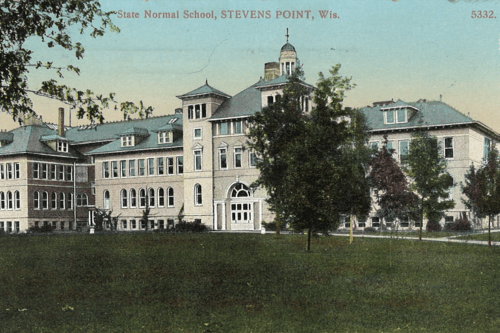
23. Wisconsin State Normal School, Stevens Point
Today, this campus is known as the University of Wisconsin–Stevens Point. The original building pictured here (“Old Main”) still exists.
Source: Author’s personal collection
Over the course of her California visit, Montessori was invited by various other U.S. cities to visit and conduct lectures and courses: New York; Washington, D.C.; Portland, OR; and Stevens Point, WI. Montessori’s assistant Helen Parkhurst was on the faculty of the Wisconsin State Normal School (23), in Stevens Point, and Montessori eventually signed a contract to join the school’s faculty, to begin in January 1916 (Stevens Point Journal, 1915, October 28). Ultimately, this arrangement was canceled for several reasons, including a lucrative offer from the Kingdom of Spain to reform their educational system (Stevens Point Journal, 1915, December 8). Montessori left the United States in early December 1915, a passenger on a ship bound for Spain.
References
Ancestry.com. (2010). New York, U.S., Arriving passenger and crew lists (including Castle Garden and Ellis Island), 1820–1957 [database online]. (Ship Passenger and Crew List for the Duca degli Abruzzi, digitized from a collection of microfilm held at the National Archives and Records Administration.)
Bonsteel, A. (1995). Maria Montessori and the “glass house.” NAMTA Journal, 20(3), 7–13.
Buckenmeyer, R. (Ed.). (2018). The California lectures of Maria Montessori, 1915: Collected speeches and writings by Maria Montessori. Montessori-Pierson.
Cohen, S. (1972). Montessori comes to America, 1911–1917. Notre Dame Journal of Education, 2(4), 358–372.
Gutek, G. L., & Gutek, P. A. (2020). America’s early Montessorians: Anne George, Margaret Naumburg, Helen Parkhurst, and Adelia Pyle. Palgrave Macmillan. https://doi.org/10.1007/978-3-030-54835-3
Massachusetts Board of Panama-Pacific Managers. (1916). Massachusetts at the Panama-Pacific International Exposition, San Francisco, California, 1915: Report of the Board of Panama-Pacific Managers for Massachusetts. Wright & Potter. http://archive.org/details/massachusettsatp00mass
Montessori, C. (Ed.). (2015). Maria Montessori writes to her father: Letters from California, 1915. Montessori-Pierson.
National Education Association of the United States (NEA). (1915a). Journal of proceedings and addresses of the fifty-third annual meeting and International Congress on Education (Vol. 53). https://hdl.handle.net/2027/uc1.a0004282620
National Education Association of the United States (NEA). (1915b). Official program, fifty-third annual convention, National Education Association and third International Congress on Education, Oakland, California, August 16 to 28, 1915. Series 1, Box 3958, Folder 4: NEA1008–RG National Education Association—Conferences and Conventions. Special Collections Research Center, George Washington University Libraries, Washington, DC.
Panama-Pacific International Exposition. (1915). Official guide of the Panama-Pacific International Exposition, 1915, San Francisco, California, U.S.A. Wahlgreen Company. http://archive.org/details/offguidepanama00wahlrich
Parham, J. (2023). Reframing and recontextualizing Maria Montessori’s 1915 California visit. Journal of Montessori Research 9(2), pp. 44–65. https://doi.org/10.17161/jomr.v9i2.21042
Ryan, W. C., Jr. (1916). The Montessori demonstration school. In Education exhibits at the Panama-Pacific International Exposition, San Francisco, Cal., 1915 (pp. 98–99). Government Printing Office. https://bit.ly/ryan-glasshouse-1916
Todd, F. M. (1921). The story of the exposition: Being the official history of the international celebration held at San Francisco in 1915 to commemorate the discovery of the Pacific Ocean and the construction of the Panama Canal. G.P. Putnam. https://catalog.hathitrust.org/Record/001515106
Newspaper Articles
Dr. Montessori due here on Sunday next. (1915, July 30). San Francisco Examiner, 9. https://www.proquest.com/docview/2132790517
First Montessori lecture. (1915, August 6). San Francisco Chronicle, 5. https://www.proquest.com/docview/574389001
La Dr. Montessori a San Francisco: L’Illustre pedagogista iniziera’ oggi il corso delle sue lezioni all’esposizione. (1915, August 2). L’Italia, 4. https://cdnc.ucr.edu/?a=d&d=ITA19150802.2.37
Madame Montessori to give 12 lectures. (1915, September 29). San Francisco Examiner, 12. https://newspapers.com/image/457705040
Madam Montessori at Oregon Building. (1915, August 16). Lane County News, 4.
Madam Montessori returning to Italy: Announcement of the cancelling of Madam Montessori’s engagement made by local bureau. (1915, December 8). Stevens Point Journal, 1. https://www.newspapers.com/image/250416241
Montessori child education method is opened at exposition today; kiddies trained at fair under new system. (1915, August 2). San Francisco Call and Post, 1. https://cdnc.ucr.edu/?a=d&d=SFC19150802.2.103
Montessori classes to open at exposition. (1915, July 30). San Francisco Chronicle, 11. https://www.proquest.com/docview/574353624
Montessori to teach: Famous woman educator will give course at Normal. (1915, October 28). Stevens Point Journal, 2. https://www.newspapers.com/image/250413686
Normalites hear Italian educator. (1915, July 2). San Diego Union, 6.


